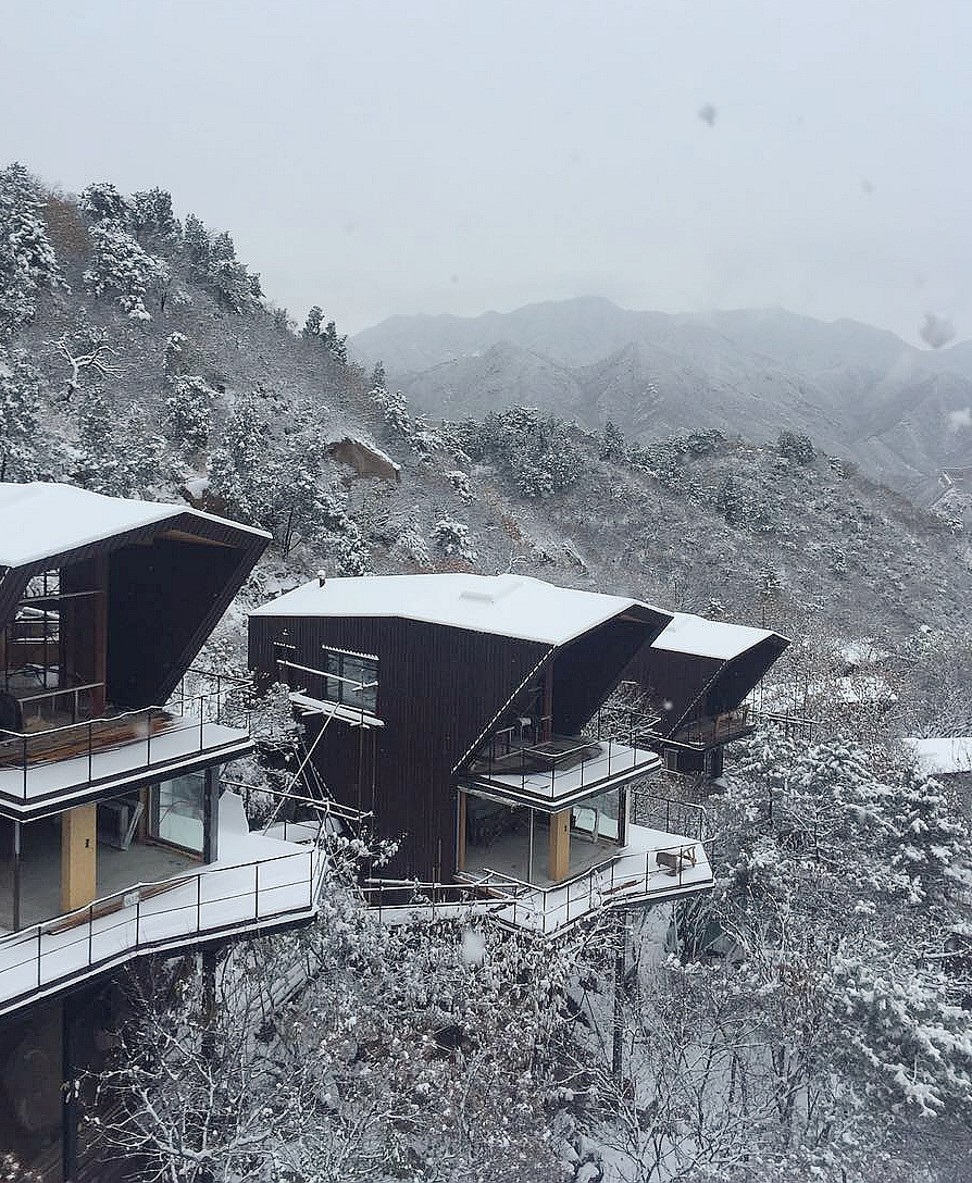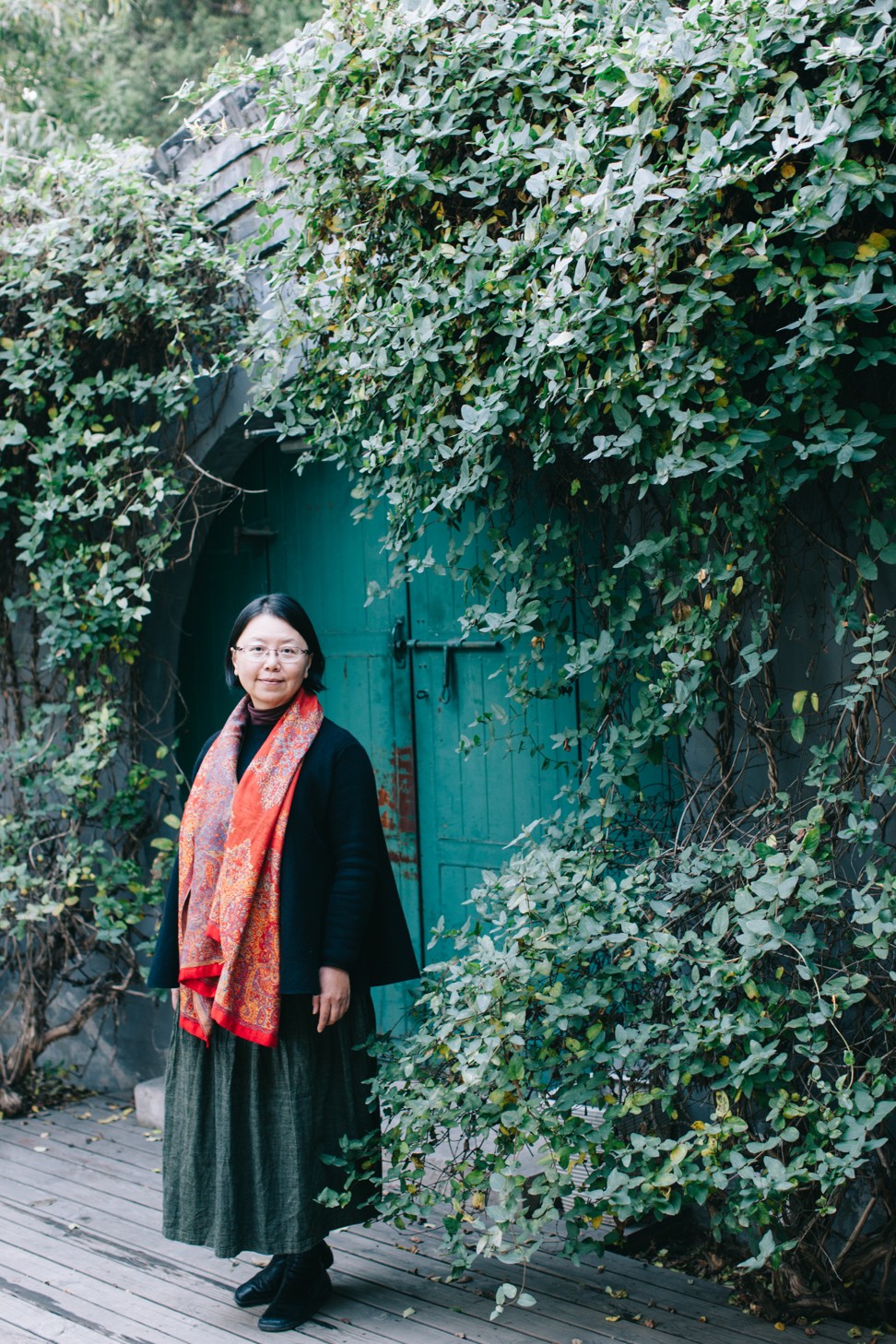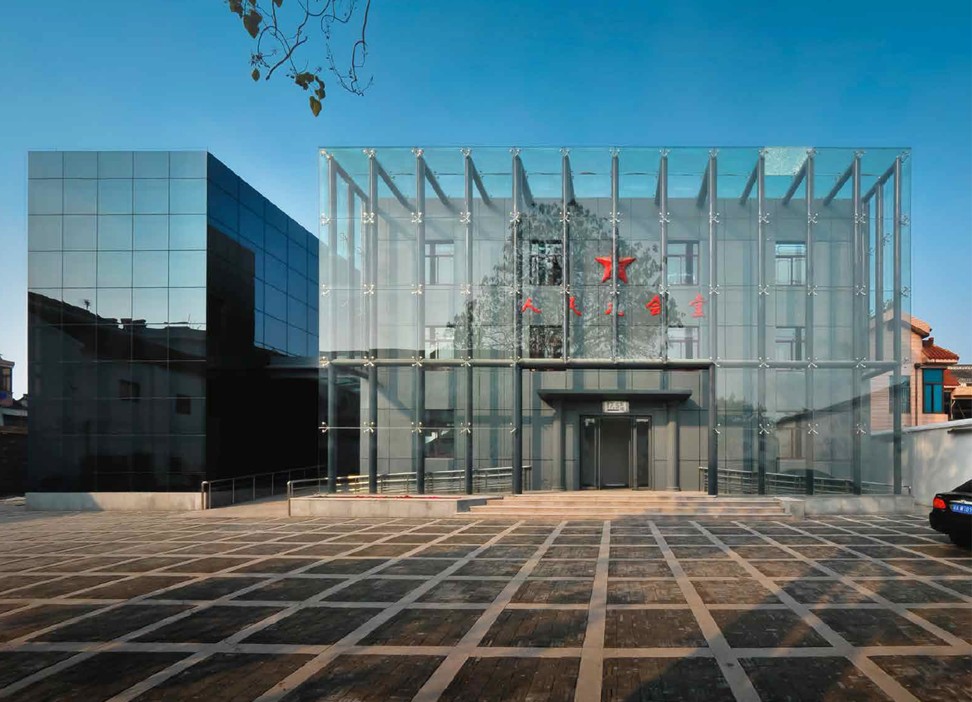
The Ding Xiang Eco-Village, by Biechu Kongjian Archi*tects, which Dong Mei and her husband, Liu Xiaochuan, founded in Beijing in 2004.
Williams also singles out the “heroic story” of Tang Yuen, the septuagenarian chief architect at the Shanghai Institute of Architectural Design & Research, who today oversees more than 1,500 staff. In 1967, Tang’s education was disrupted by the Cultural Revolution, just after she had completed her undergraduate studies at Beijing’s Tsinghua University. It would be 11 years before she could resume her studies, this time at Shanghai’s Tongji University.
Tang went on to design a number of notable public buildings in Shanghai in the late 1980s, including the 84,000-square metre Shanghai Library, in the city’s Xuhui district, and contributed to the sympathetic restoration of the Peace Hotel. Constructed on the Bund in 1929, the hotel reopened in 2010, and remains one of Shanghai’s most important art deco landmarks.
What most impresses Williams about the works in New Chinese Architecture, however, is their variety, even – or especially – within individual portfolios.
“The variation, the variability, the varied nature of their work is striking,” Williams says. “You do not get that in the West, where one will have an oeuvre, as they say: you become a commercial architect, or a hospital architect …”
For example, Wang Wei, founder of Field Architecture Office, in Beijing, has presided over a sensitive, modern-meets-regional regeneration of rural Baima village, in Sichuan province, as well as a 200-metre-long, multipurpose development in Chengdu’s Panchenggang district that encompasses a community centre, a gym, a farmers’ market and a police station.

Dong Mei. Photo: Wei Ping
For the Panchenggang project, she resist*ed the urge to think vertically, turning the skyscraper concept on its side and building horizontally. The development has echoes of the vast, low-rise factories that once defined the local landscape.
“The site is filled with memories from Chengdu’s industrial past,” Wang says. “I wanted to show my respect for that heritage.”
Williams also calls attention to “intense*ly private” Lu Wenyu, wife of 2012 Pritzker winner Wang Shu (the first Chinese citizen to win the prize). The couple founded Amateur Architecture Studio, in Hangzhou, in 1998. The Pritzker jury described its work, which frequently draws on Chinese tradition and uses salvaged materials, as “timeless, deeply rooted in its context, and yet universal”.
Amateur Architecture’s completed projects include Wenzheng Library, at Suzhou University; Ningbo Historic Museum; and China Academy of Art’s Xiangshan Campus, in Hangzhou.
In Chinese architecture, as in Chinese society, the question is, ‘How do you marry the individual with the state?
Austin Williams, managing editor, New Chinese Architecture
“There’s been a campaign in the West asking why Wang Shu won the Pritzker when his wife was equally involved in the work,” Williams says. “When you chat to her, she doesn’t want it. She says, ‘I like to sit down with my feet up and a cup of tea after a hard day in the office. I don’t want to be flying around the world going to inter*national conferences, so leave me out of it.’”
In the pages of the book, she says, “After Wang Shu won the Pritzker Prize, his private life disappeared, but I wanted mine. I want my life.” Defying critics who lambast*ed her for not demanding her share of the fame, Lu adds, “To assume that I – or anyone – merit acclaim simply by being a woman is wrong.”
Williams maintains that the “starchi*tect” phenomenon, now so entrenched in the West, is unlikely to take root in China. “Politically, it can’t. It would not be allowed to,” he says, adding, however, that Ma Yansong – founder of Mad Architects, headquartered in Beijing – would be closest to qualifying for such celebrity, alongside Wang Shu (both of whom are male). Chinese architects, no matter how success*ful and respected they become, are unlikely ever to be blessed with “the same level of autonomy that they can then do whatever they **** well please because” – within China, at least – “there will be constraints on what they can and cannot say”.
“In Chinese architecture, as in Chinese society, the question is, ‘How do you marry the individual with the state? How do you marry the idea of creating a globalist future with a traditionalist past while safeguard*ing the stability and harmony of the system?’”

Tang Yuen.
As an example, Williams considers Ma’s Chaoyang Park Plaza complex, in Beijing, which echoes the contours of black-granite mountains and reflects on Chinese shanshui paintings. “He’s trying to make some sort of connection [with tradition],” Williams says. “Whether he is saying that to satisfy the paymasters, I don’t know. But people are playing with the fact that they have to be part of the system, and that’s a tricky balance.
“Most of these architects – and I don’t think this is a conscious, cynical process – are genuinely trying to find what is the new Chinese architecture, but to do that you would have to have a social break with the past. If you don’t, you are only going to repeat some of the traditionalist ideas, and you’re going to do pastiche stuff.”
The international launch of New Chinese Architecture, on June 27, coincides with the London Festival of Architecture, which is being held at various venues across the British capital throughout this month. The associated exhibition will kick off at the University of Liverpool in London’s campus, also on June 27, and run for three weeks.
With last-minute tweaks being made to the displays in Shanghai, Williams declares that – while most of the 20 women archi*tects featured in the new book studied abroad, most notably in the US – Chinese architecture is now at a watershed moment. Influences are melding, he believes, to create something new, eclectic and dynamic in China.

Designed by Ding Wowo, the People’s Hall, in Jiangyin, Jiangsu province is featured in New Chinese Architecture. Photo: Ding Wowo
“That Japanese thing about beau*ti*fully crafted buildings in very small, awk*ward spaces. That taps into the Confucian mind*set in China, so people are shifting Asian-wards rather than just replicating some crazy parametric building in San Francisco.
“Then there’s a search for authenticity in terms of Chinese architecture, and that is looking into the realm of the past. But at the same time – because you can’t have a conver*sation about China without talking about its contradictions – there’s also a generation that is globalist in its mindset, who are looking to Australian vernacular, to Japanese high-rise, to West Coast weird architecture. People are experimenting.
“We’ve moved away from people going overseas to be educated in creativity, to coming back to be educated in creativity, and we are right at the moment, at that cusp, when the new direction might be found.
“These are interesting times.”
For men and for women.








 Reply With Quote
Reply With Quote